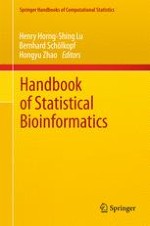2011 | OriginalPaper | Buchkapitel
7. Mixture Tree Construction and Its Applications
verfasst von : Grace S. C. Chen, Mingze Li, Michael Rosenberg, Bruce Lindsay
Erschienen in: Handbook of Statistical Bioinformatics
Verlag: Springer Berlin Heidelberg
Aktivieren Sie unsere intelligente Suche, um passende Fachinhalte oder Patente zu finden.
Wählen Sie Textabschnitte aus um mit Künstlicher Intelligenz passenden Patente zu finden. powered by
Markieren Sie Textabschnitte, um KI-gestützt weitere passende Inhalte zu finden. powered by
